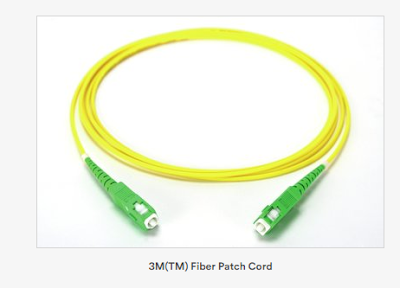Corning agreed to acquire 3M’s Communication Markets Division in a cash transaction valued at approximately $900 million. This business consists of optical fiber and copper passive connectivity solutions for the telecommunications industry including 3M’s xDSL, FTTx, and structured cabling solutions and, in certain countries, telecommunications system integration services.
 3M’s Communication Markets Division, which is based in Austin, Texas, has an annual turnover of approximately $400 million for its high bandwidth and optical fiber products. This puts the acquisition at less than 7 times the Communication Markets Division’s estimated forward-annual adjusted EBITDA, including expected run-rate synergies.
3M’s Communication Markets Division, which is based in Austin, Texas, has an annual turnover of approximately $400 million for its high bandwidth and optical fiber products. This puts the acquisition at less than 7 times the Communication Markets Division’s estimated forward-annual adjusted EBITDA, including expected run-rate synergies.
Corning said it expects the transaction to add $0.07-$0.09 to 2019 EPS. In addition to its operations in Texas, the 3M business also has a dedicated manufacturing facility in Pontchâteau, France, and operations in Hannover, Germany. Approximately 500 3M employees are expected to join Corning upon completion of the transaction.
“Corning leads in optical passive components and solutions. This transaction expands both our global market reach and our high-bandwidth portfolio. It also provides new co-innovation opportunities and enhances our ability to serve customers globally,” said Clark S. Kinlin, executive vice president, Corning Optical Communications. “As the industry’s only true end-to-end manufacturer and supplier of optical solutions, we look forward to bringing these two strong organizations together and welcoming a group of outstanding employees.”
 3M’s Communication Markets Division, which is based in Austin, Texas, has an annual turnover of approximately $400 million for its high bandwidth and optical fiber products. This puts the acquisition at less than 7 times the Communication Markets Division’s estimated forward-annual adjusted EBITDA, including expected run-rate synergies.
3M’s Communication Markets Division, which is based in Austin, Texas, has an annual turnover of approximately $400 million for its high bandwidth and optical fiber products. This puts the acquisition at less than 7 times the Communication Markets Division’s estimated forward-annual adjusted EBITDA, including expected run-rate synergies.Corning said it expects the transaction to add $0.07-$0.09 to 2019 EPS. In addition to its operations in Texas, the 3M business also has a dedicated manufacturing facility in Pontchâteau, France, and operations in Hannover, Germany. Approximately 500 3M employees are expected to join Corning upon completion of the transaction.
“Corning leads in optical passive components and solutions. This transaction expands both our global market reach and our high-bandwidth portfolio. It also provides new co-innovation opportunities and enhances our ability to serve customers globally,” said Clark S. Kinlin, executive vice president, Corning Optical Communications. “As the industry’s only true end-to-end manufacturer and supplier of optical solutions, we look forward to bringing these two strong organizations together and welcoming a group of outstanding employees.”
















